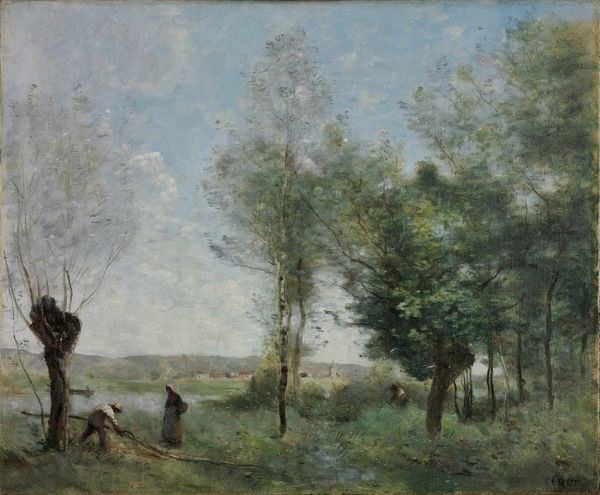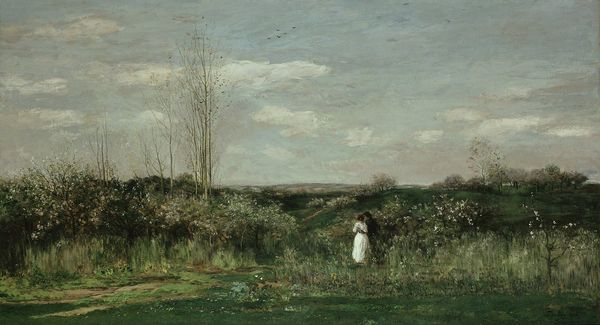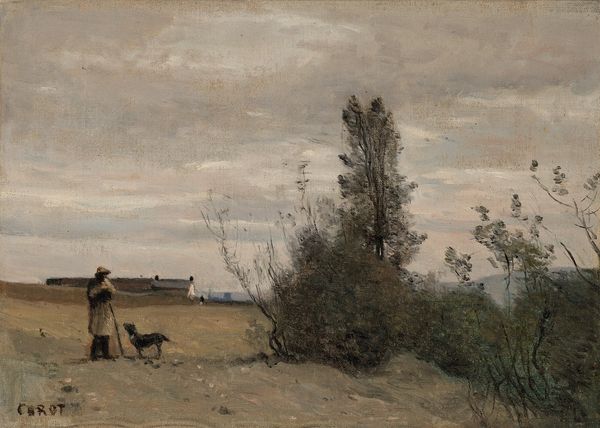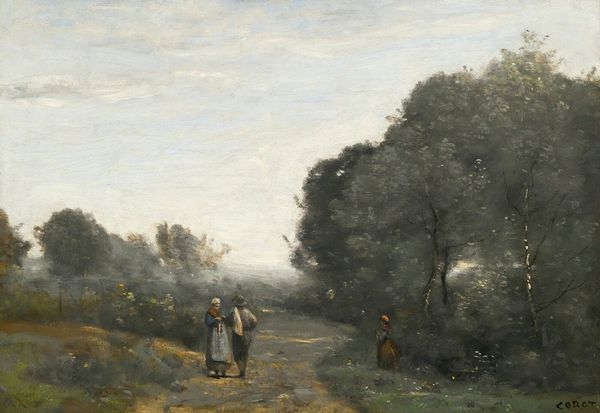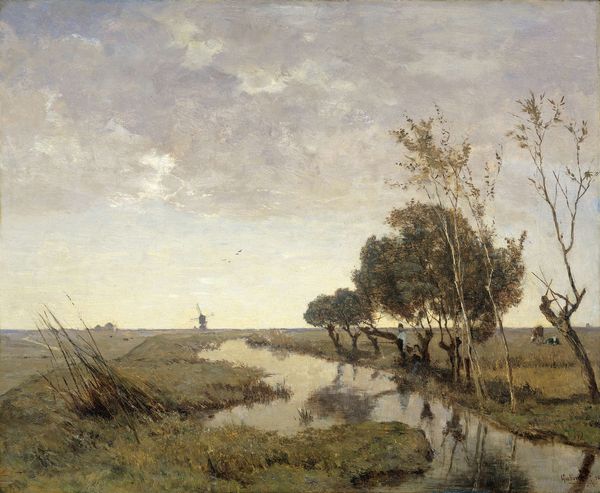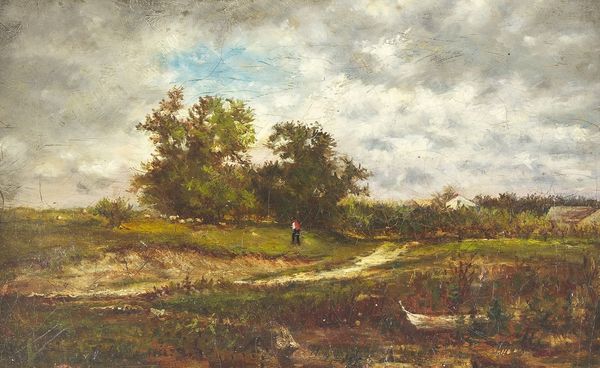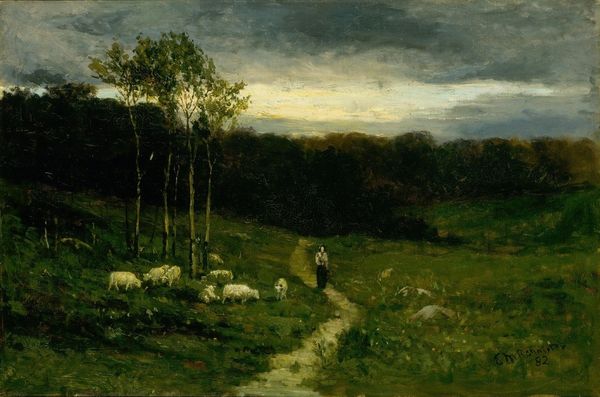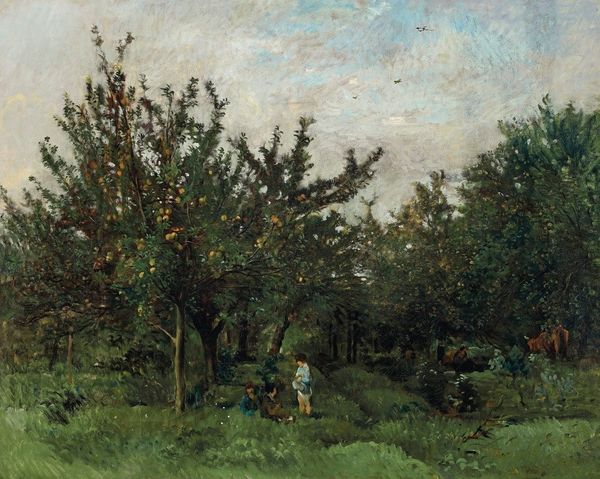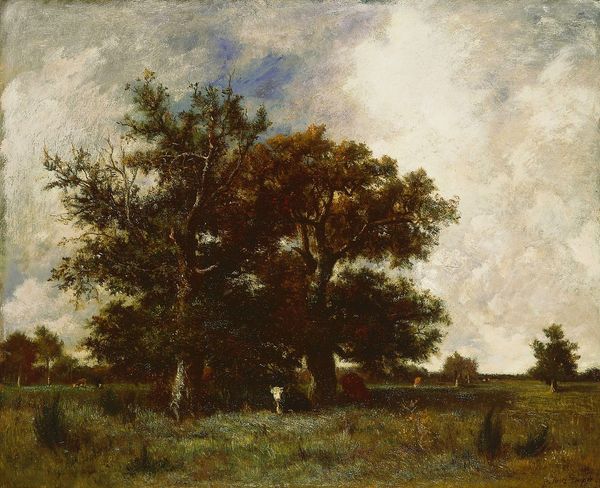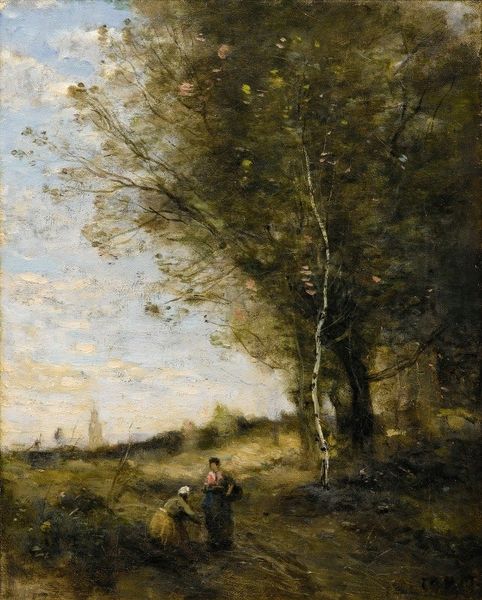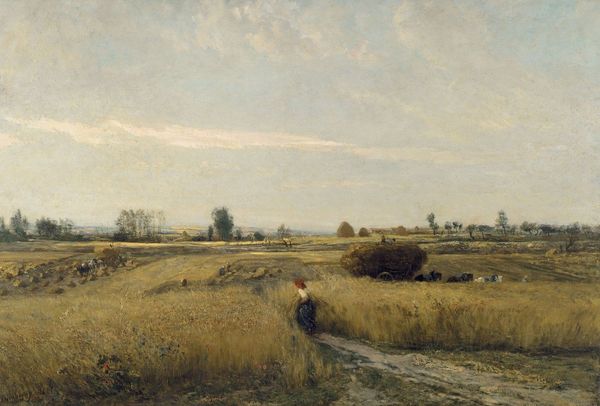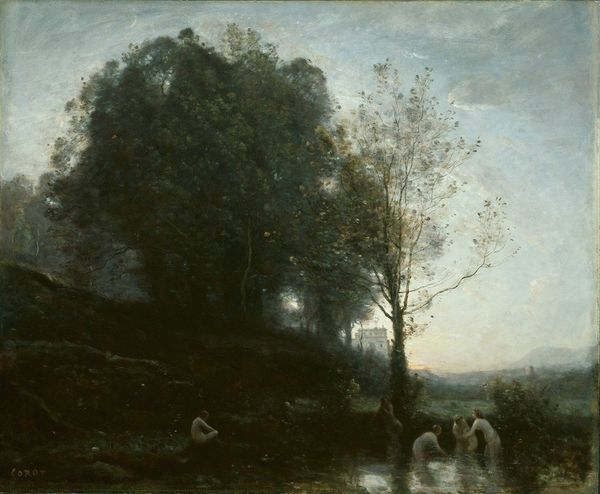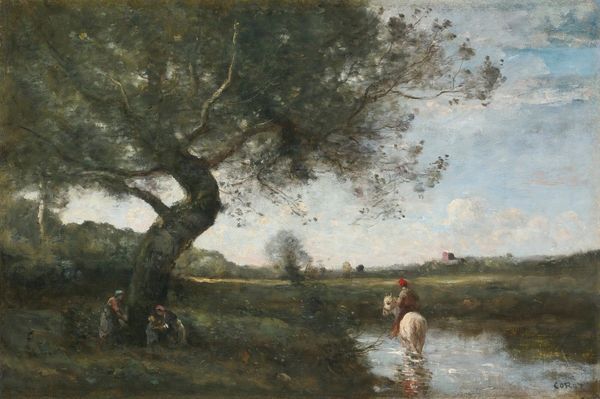
Dimensions: 96 x 193 cm
Copyright: Public domain
Charles-François Daubigny made this oil on canvas called ‘Spring’, its date is unknown. The painting suggests a vision of France rooted in the realities of rural life, but also subtly infused with social commentary. In this period, the French landscape tradition was often bound up with ideas of national identity and belonging. But Daubigny doesn’t idealize peasant life in the manner of a more conservative artist. Instead, we find a woman working, with her back to us, pushing a wheelbarrow through a field. It’s a composition rooted in direct observation. The lack of idealization could be read as a critique of the widening gap between urban and rural life in mid-19th century France. The city became the focus for industrial progress and artistic innovation, but Daubigny reminds us of the labor that sustained it. To fully understand this painting, we need to consider the social and economic conditions of rural France, comparing Daubigny's vision with those of his contemporaries. This kind of research can help us to understand the role of art in shaping perceptions and challenging social norms.
Comments
No comments
Be the first to comment and join the conversation on the ultimate creative platform.
